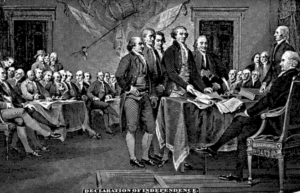by Aaron R K
The current version of the internet is broken, because most of the individuals using it do not actually own it. The creators of web domains and websites, those builders who, through work and imagination have made the internet what it is, do not actually own the domains and and sites that they created. This is because internet’s current version, Web 2, centralizes ownership of and authority over domains, websites, and the networks of hardware providing Web infrastructure.
AWS, Amazon Web Services, which controls much of the planet’s internet hardware infrastructure where cloud computing services are done, has shown a willingness to shut down web services that express views contrasting with the political opinions of those who control AWS.
There are similar situations of censorship with other titans of the Internet, such as Google, Facebook, and large web services operating in Communist China. The personal opinions, of those who dominate these huge organizations, often determine what content is prioritized, and what is hidden or censored. Regarding Google and Facebook, the argument might be given that they are private companies, and they can censor whatever they want on their platforms, however there are also other arguments. The large IT corporations are used by hundreds of millions of people for digital communication, much as telephones are used as a public network. Does the telephone company have the right to deny service based upon political bias? Can discrimination against those with different ideological or philosophical viewpoints be compared to religious discrimination?
Clearly, even within mainstream views of society and law, there are some limits to the degree to which a private business or government can or should discriminate. Whether or not the censorship of privately owned tech companies is legal, this situation shows that, with Web 2, most users do not fully own the websites, domains and social media accounts they create in the online world. They are there as guests, and regarding domains and websites, they are required to pay for their entrance into the space, without the possibility of full ownership.
ICANN, The Internet Corporation for Assigned Names and Numbers, allows individuals to create domains (or domain names), which they do not own, but which they can use, provided they pay a yearly fee, and provided ICANN allows them to continue to operate with their particular domain. In other words, internet domains are rented but not owned. If you fail to pay the yearly fee on time, you risk losing the use of that domain name. Or if you are, for some reason, on the bad side of ICANN they can block your use of that domain. For example if you try to improperly use the name of an established business, such as using a domain name like DisneyWorld.com, before the actual Disney corporation has created that domain, this could lead to you losing the rights to use that domain. This seems fair enough, at least to me. However, it also shows that domain “owners” do not really own their domains. They are mere tenants, subject to the whims of the so-called elite, of technology’s ruling class.
One way to deal with this situation is to build a new internet, in which domains, websites, and online digital material and assets are privately owned by the creators. Such an internet could be viewed as a collection of millions or even billions of privately owned domains, websites, networks, apps and platforms, whose individual owners are capable of communicating and transacting directly with each other.
Web 3 is this new internet, one which consists mainly of direct digital connections between individuals, with little or no need of internet monopolies. With Web 2, a small group of tech entities own most of the assets and infrastructure. Web 3 provides opportunities for distributing the wealth and power of the internet to a far larger group of owners. In fact, using Web 3, most people will be able to own a part of the internet. When I say “own”, I mean that literally. Web 3 blockchain names (which are actually types of NFTs!), such as .crypto and .blockchain domains can be bought once, and owned for as long was the buyer wants to keep them, without needing to pay again for use and control of the domain names. You buy it once, and it is yours to keep for as long as you want, in other words true ownership.
Other network services, such as wireless hardware the connect online devices, website hosting, and file storage, can also be decentralized, and privately owned by individuals, often without requiring a large amount of capital to invest. Web 3 technology provides true private ownership of Web assets, owned by the many instead of the few, and proving new jobs and income sources to millions of people.

With the Declaration of Independence, America became a nation. In that statement which founded the United States of America, “life, liberty and the pursuit of happiness” are central concepts, relating to the original vision of America, which made it the great nation that it is. A substantial part of fulfilling this vision is the protection of private ownership, and of private ownership being widespread among the people, held by the many, not just by the few. Web 3 brings this vision to the digital age.